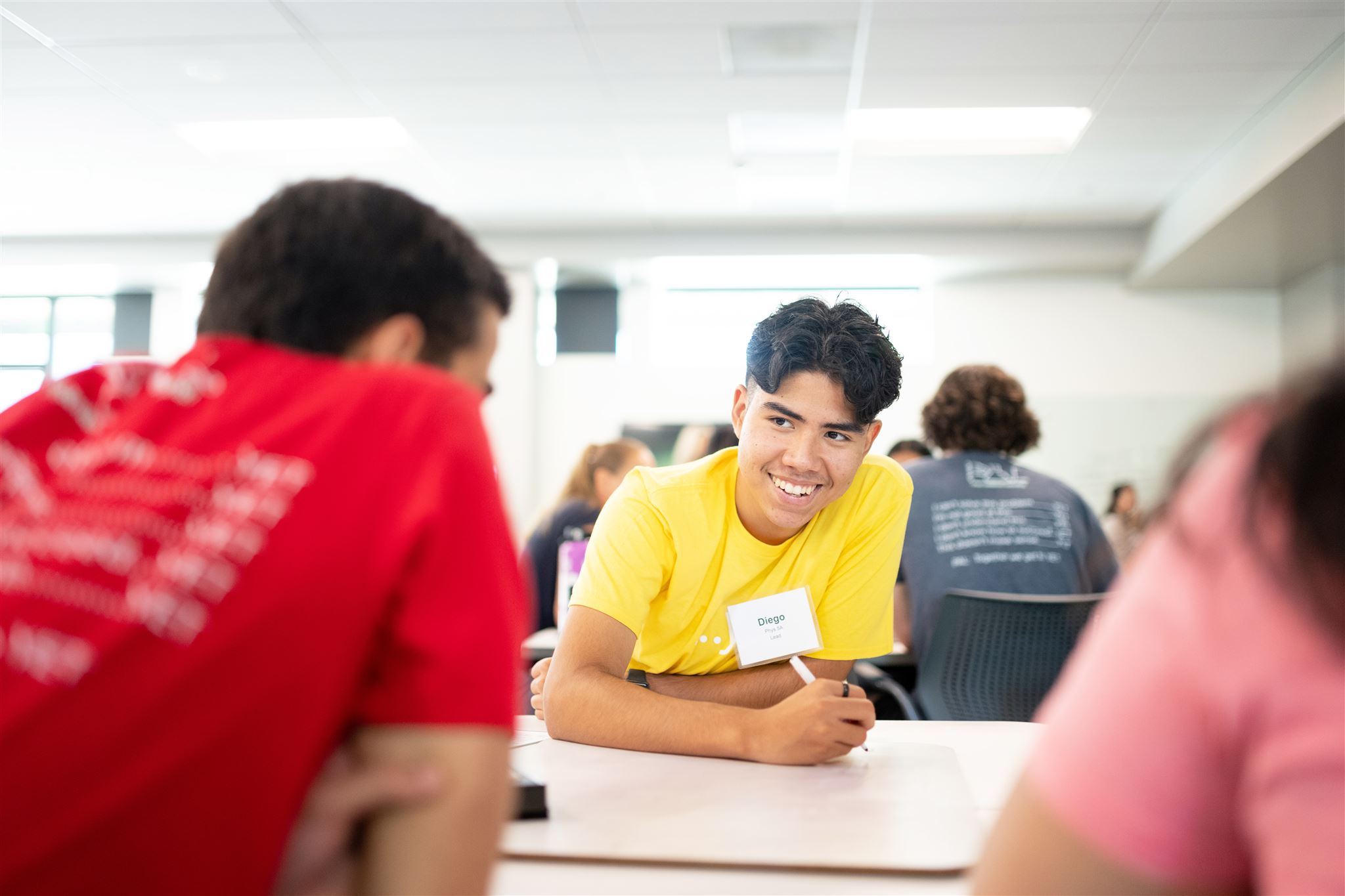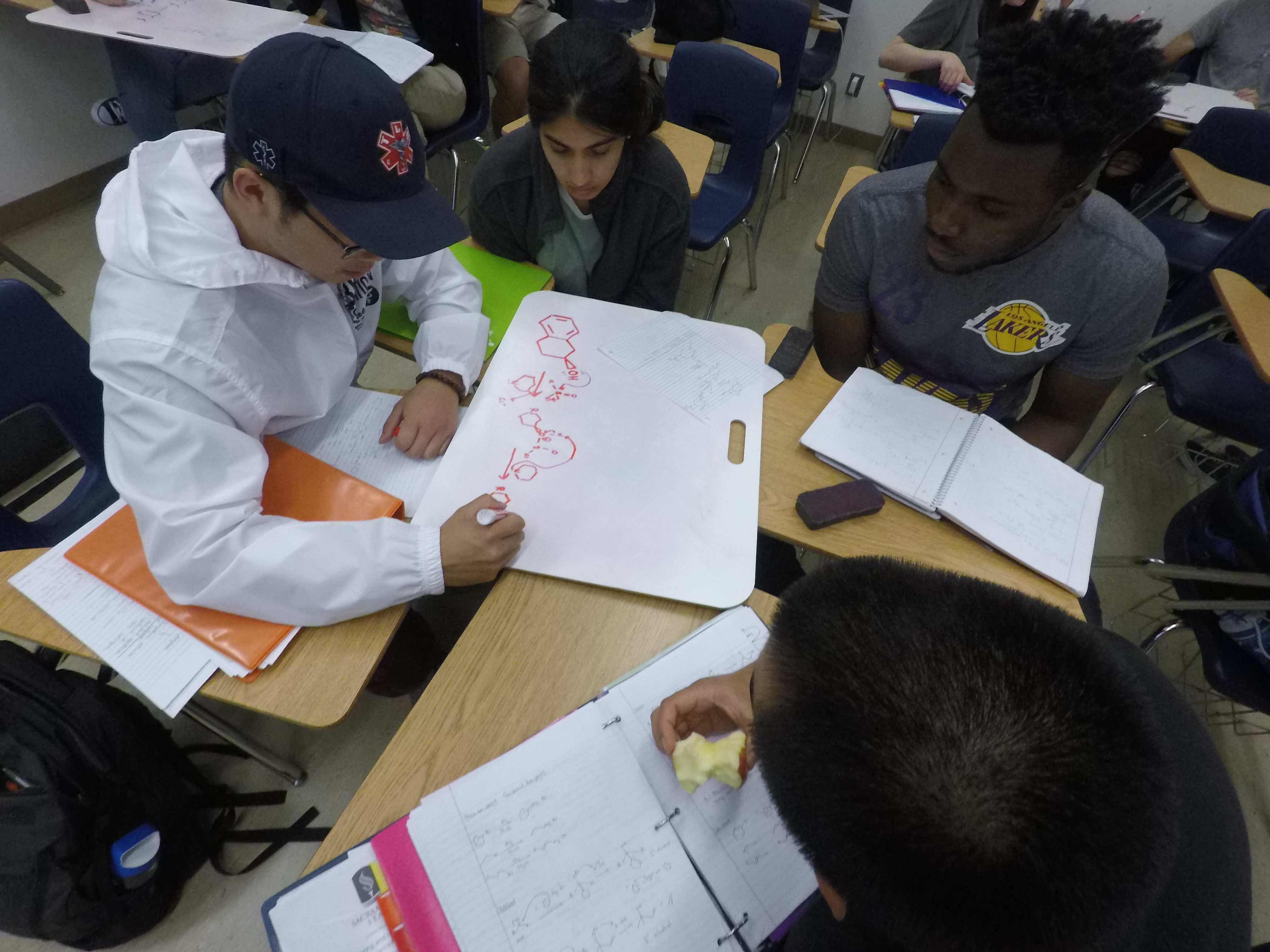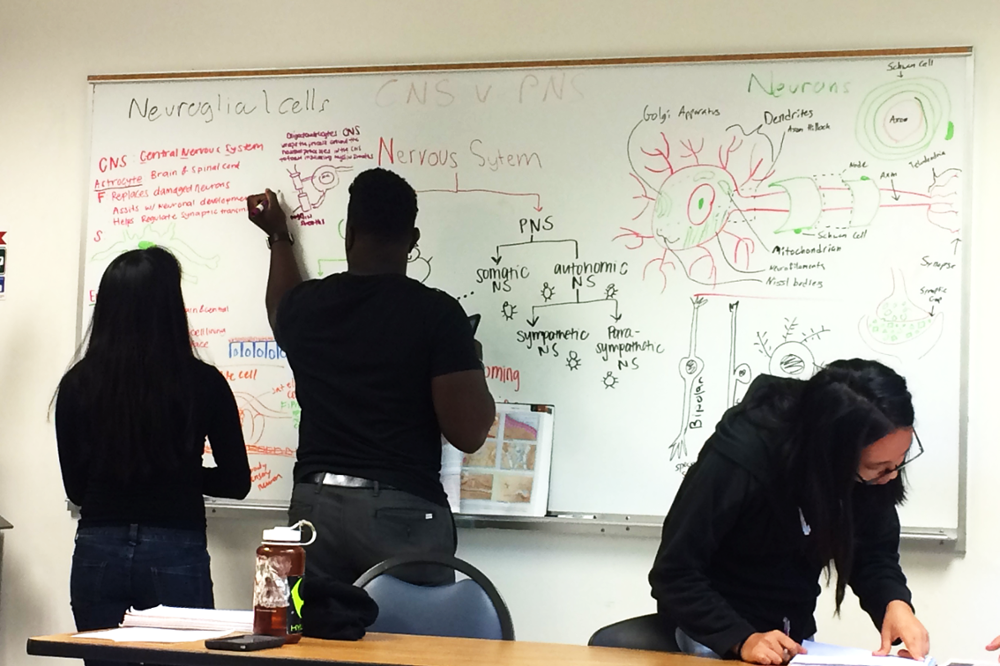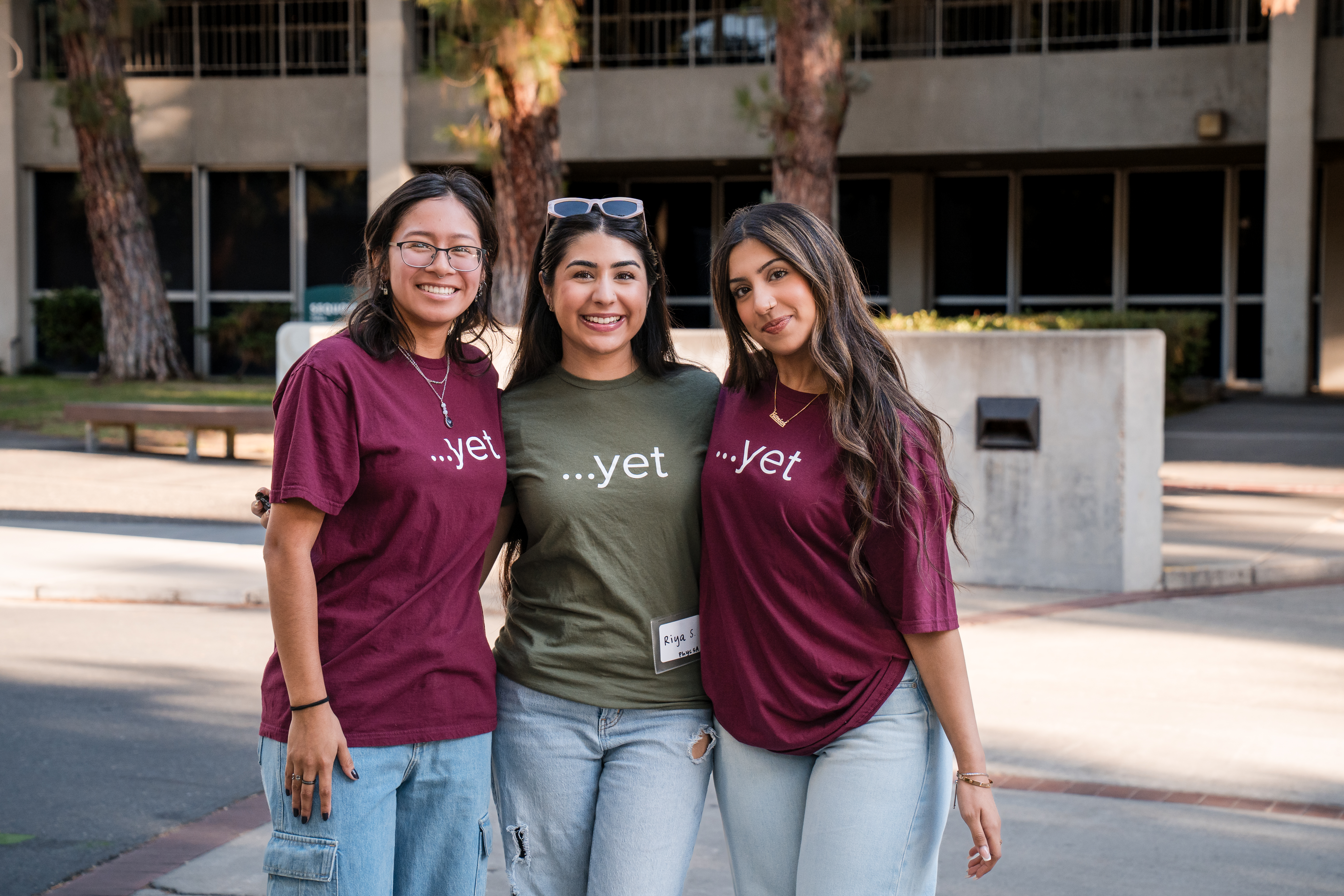Support Page Content
What is PAL?
PAL classes are optional 1-unit courses available for students enrolled in gateway science and mathematics courses.
This means that during PAL sessions, students who get stuck and ask a question will be asked to dig deep for what they understand on a basic level and then gently guided (via more questions) to higher and higher levels of competence, until they are able to solve the original problem on their own.

The PAL Model
The PAL model is based on twenty years of national research on learning using something called Peer Led Team Learning (PLTL).
During each PAL session, students work in small groups with classmates on whiteboards to solve worksheet problems written by their instructors. The PAL model encourages students to develop their own understanding of the material under the guidance of an experienced Facilitator. Facilitators are not there to show a student how to do something – the course instructors are already doing that. Rather, Facilitators ask guiding questions that support the student as they are creating their own knowledge base.
This can sometimes frustrate students, who just want someone to show them how to do a problem, so that they can memorize it for the exam. However, this approach rarely creates true understanding. Thus, students in a PAL will find their question answered with a question, over and over again. This is not because Facilitators are trying to frustrate students! Quite the opposite—Facilitators are deeply invested in the success of their students. But these leaders have seen the research on meaningful learning and know that the way to ensure true success is to have students do the hard work of carving out their own understanding.

Why whiteboards are required
During PAL, students work together (in groups of 3-4) on instructor-designed problems. To ensure that students are actually working together, and not simply alone but next to each other, the use of whiteboards with one, rotating pen is mandatory. Why does this matter? Several reasons:
-
Students learn a lot from each other. That includes observing someone approaching the problem from a different angle, or using a different starting point, and it also includes the important visualization of drawings or graphs that may help in approaching the problem. Everyone will be in the position of leading the group and everyone will be observing at some point. Each has its advantages, and students learn from both.
-
Engaging with different levels of expertise improves overall understanding. Sometimes the person leading the problem will be adept with the material and sometimes they won’t – both situations allow all students to gain understanding and to practice communicating math/science. People often assume that struggling students gain the most from these sessions, but the research actually shows that students with the greatest skill benefit even more, as stronger students learn the material at a deeper level while trying to help those having trouble. So, if you are struggling, speak up! You are providing one of your group members with a great opportunity to increase their learning!
-
Mistakes are opportunities to learn. Every participant will encounter a situation where they make an error or where they observe another’s error. What you learn from this situation, in a PAL where it is safe to make mistakes and delve into why this particular error occurred, will make you a much stronger student. Viewing mistakes as opportunities is an essential part of having a “growth mindset”, where you understand that academic success – in any context – is achievable if you work hard in a supportive environment.

Why facilitators do not confirm answers
This can be frustrating for students, but there is a reason why Facilitators are trained not to confirm answers.
Students who become accustomed to always having their answers verified (by the book, the answer key, the teacher) are often uncomfortable in exam situations when that instant gratification is not available. These are the students who tend to change correct answers to incorrect ones. It’s also unrealistic (in the world) to expect all of your answers to be instantly verified. Students need to be comfortable being “mostly sure”. In PAL we want students to learn to trust in their abilities and to be comfortable with their work and final answers. Thus, Facilitators will usually answer “Is this right?” with “What do you think?”.
